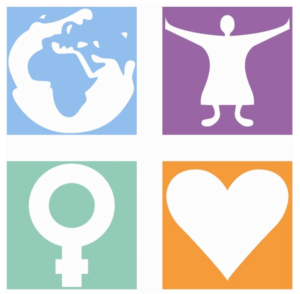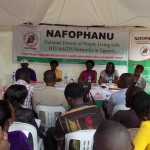Last month, researchers released results of two major studies (ASPIRE and the Ring study) which found the dapivirine vaginal ring safe and effective in HIV prevention in women especially the older woman (read full statement here: http://www.icwea.org/2016/03/the-dapivirine-vaginal-ring-a-new-hiv-prevention-tool-tailored-for-women/ )
The ring which is yet to be approved for use will join the limited basket of HIV prevention tools that are tailored for females. The ring results doubtlessly evoke a discussion about HIV prevention methods and tools for women and girls.
It is upon this basis that The International Community of Women Living with HIV Eastern Africa (ICWEA) decided to hold a dialogue on “HIV prevention strategies for women and girls” today.
The numbers
This is also owing to the recognition of the fact that although the existing HIV prevention tools and approaches like the male condom, male circumcision have contributed to reducing global HIV infections by about 40 percent, the same cannot be said for women and girls. In Sub Saharan Africa, over 60 percent of adults living with HIV are women and AIDS is one of the leading causes of death among women of reproductive age (15-44).
In addition to this, in Uganda, the HIV prevalence rate is at 7.3%, but higher, at 8.3%, among women. Recent UNAIDS data shows that one in every four new infections among women aged 15-49 years occur in adolescents and young women aged 15-24 years.
The discussion
The dialogue was set to discuss the appropriateness of existing and new HIV prevention tools and approaches, including the newly released results of the dapivirine vaginal ring.
At the dialogue, researchers presented results that showed that the Dapivirine vaginal ring was found to reduce the risk of HIV infection by 30% among women. For women who are older than 21 years, the ring was found to reduce HIV risk by 60%.
The ring contains dapivirine, a drug used in HIV prevention. It is inserted by the women and is left in place for one month during which time, it keeps on releasing the ARV medication (dapivirine) slowly to prevent HIV infection among HIV negative women.
One of the women who took part in the research during the dialogue said, “I used the ring without telling my partner. I did not want him to know. He never felt it during sex and I would also not feel it. I usually forgot that I was wearing it until the day I was supposed to go back to the hospital. Inserting it is also very easy; I fold it to form the shape of letter “8”, squat and push it in and immediately after I am good to go. The ring is good and has no side effects. It is my secret weapon against HIV.”
Another woman said, “I like the ring because it empowers me and makes me feel safe. Most of us women stay at home as our husbands go out there and we do not know what they do when we are not with them. In case they sleep around, the ring will keep us safe.”
One of the research participant’s male partner said he would never have found out that she was using a ring if he had not been told. A few males reported that they felt the ring during some sex positions.
This advocates agreed calls for male engagement to some level to avoid domestic violence in cases where trust issues are raised because the male partner was not informed prior.
But for as long as it is not approved, the ring is still just but a promise. So how are women and young girls expected to protect themselves against infection?
Female condoms are to date very hard to access since they are not available at health centres. This leaves women with PrEP, another female controlled HIV prevention method. PrEP stands for Pre-Exposure Prophylaxis. The word “prophylaxis” means to prevent or control the spread of an infection or disease. The goal of PrEP is to prevent HIV infection from taking hold if you are exposed to the virus.
Unfortunately, though approved, Uganda is yet to set guidelines for the use of PrEP never mind that its counterparts Kenya and South Africa already gave a go ahead for its use in each country.
The women in the room called for the approval of PrEP to which the representative from Ministry of Health responded saying drafting of guidelines for the use of PrEP was underway to enable those who can afford it to access it.
The representative also mentioned that the ministry is embracing the combination approach which makes the release of the ring results timely because the data will help in decision making. He also added that WHO guidelines have not been adopted yet due to the countries’ resource limitations.
The participants agreed to continue putting the policy makers at task to approve and avail HIV prevention methods for women in the country while meaningfully involving the young women and girls whose new HIV infection rate is higher. The gender department under the Minsitry of Health was criticised for being dormant when it comes to pushing women’s issues.
Due to the numerous limitations that women face in society, they need female controlled HIV prevention methods that will empower them without having to bargain with men for safe sex. It is the responsibility of all advocates to make this happen.



